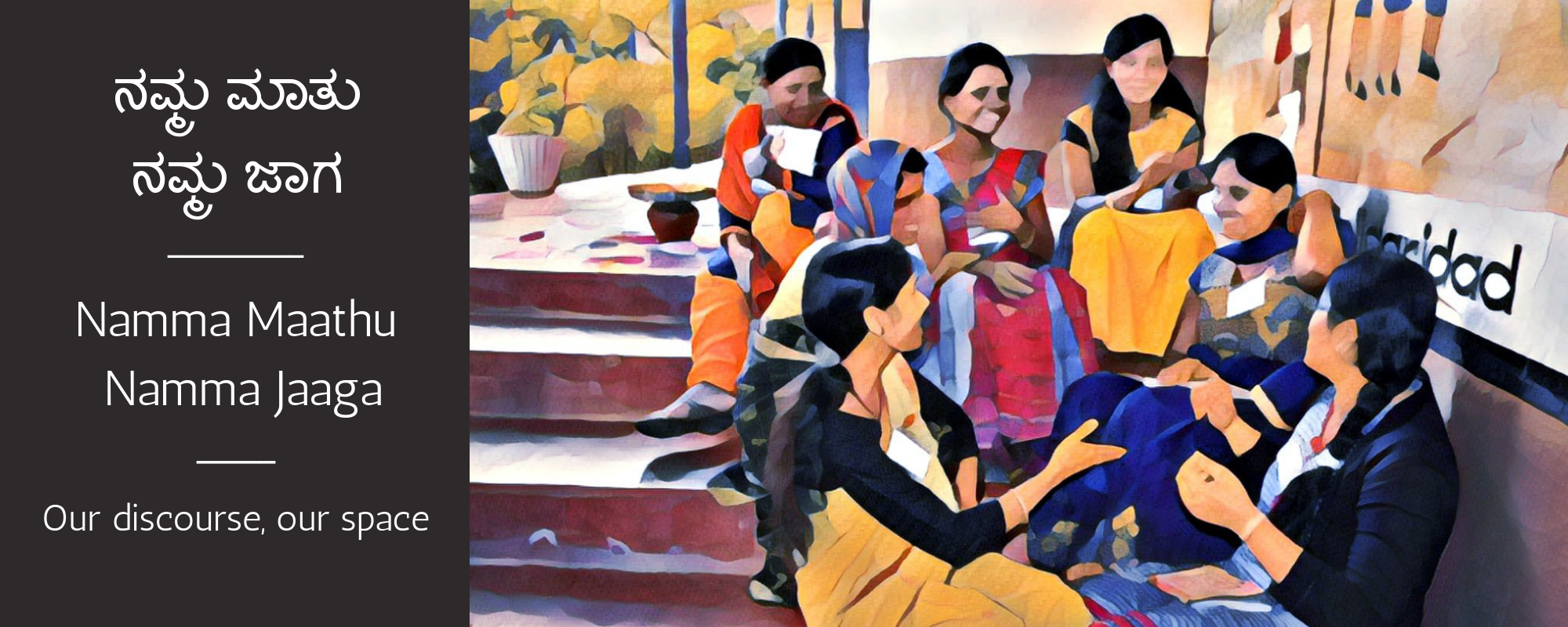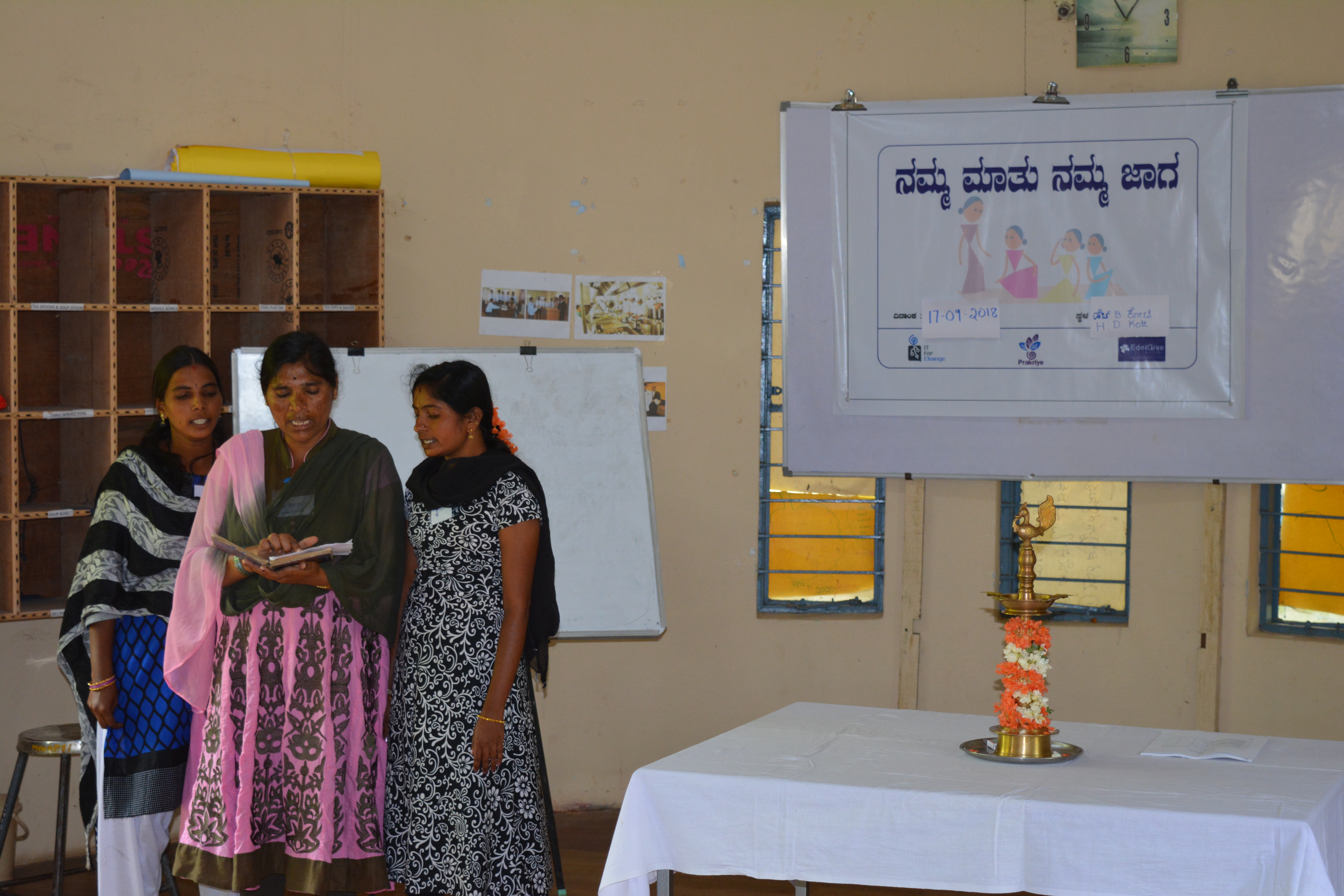
Who is a sakhi ?
Sarada Mahesh | September 2018
Whenever the women from the Kattemanugalli village face issues of abuse or harassment, they know who to turn to – the village sakhi

During a routine visit to Kattemanugalli village, the sakhis asked the women of the village if they knew what to do in case one of their own was abused by her husband, or faced problems like harassment for dowry. “We will go to the Namma Mahiti Kendra and inform the sakhi, of course. She knows best what do to.”
Over the years, the information centres (Namma Mahiti Kendra or NMK) have been an important point of contact for the residents of the different focus areas of the team, both in H.D. Kote and in Hunsuru district. These NMKs are womaned by a sakhi, usually within the age group of 20 to 40, who is responsible for keeping up with government schemes and other benefits, informing the residents of the relevant ones, taking down their information and registering them for it, and also ensuring that they receive these entitlements.
Apart from this, the sakhi also involves herself in other activities such as informing the residents of the different villages regarding education and job fairs, teaching them about technology and organizing meetings with the members in charge of governing the village. Due to this constant, first hand interaction with the residents, the sakhis have managed to build a relationship of trust with them.
One conversation is enough to understand that the sakhis know the issues of each of the residents who are under their wing, like the back of their hands. The sakhis have been dealing with cases of crimes against women long before Namma Maathu, Namma Jaaga, making them vital to its implementation.
Sitting in a circle with the us, the sakhis begin by first making an individual report regarding their work for the month — the entitlements that had been applied for, their status, the training organized by them and any problems faced by them in their work.
When posed with a general question of the types of crimes that take place against women, the sakhis sit up attentively, each contributing to the topic. “It is about time this issue is dealt with in a more organized way,” they say.
How do they get to know about such cases in the first place? While they agree that domestic abuse is considered to be a private matter, interfering with it seems like an intrusion in the life of a family. They explain that the close vicinity of the houses in the small geographical area gives life to the phrase, “the walls have ears.” They explain that either the victim-woman comes directly to the NMK and shares her situation with the sakhi, or an active woman in the village informs her regarding this. In order to confirm this, the sakhi then tries to talk with the woman in question. This, however, is easier said than done.
It may take a few days, sometimes even months, to get the woman to talk. As important a success as it may be, the women lament that it is nothing compared to the sea of problems they face when it comes to the next stage — reporting the case to the authorities.
In some cases, in order to protect themselves or their family, the victim-women will refuse to acknowledge the fact that they have any problem, which makes it difficult to provide any support to them. The women also constantly change their stance — either regarding the facts of the case, or whether there was any truth in the claim that the husbands abuse them — making it difficult to register a complaint. The police also do not offer a helping hand. In some instances, they refuse to report the case, calling it a “small fight between the couple.” They then proceed to resolve it internally and immediately, while also reprimanding the husband for his abusive behavior. This, the sakhis complain, is of no use, because on returning home, the husbands abuse their wife again for daring to report the case, which instills a fear in her and she refuses to report the husband again. This undoing of all the hard work of the sakhi is, thus, discouraging.